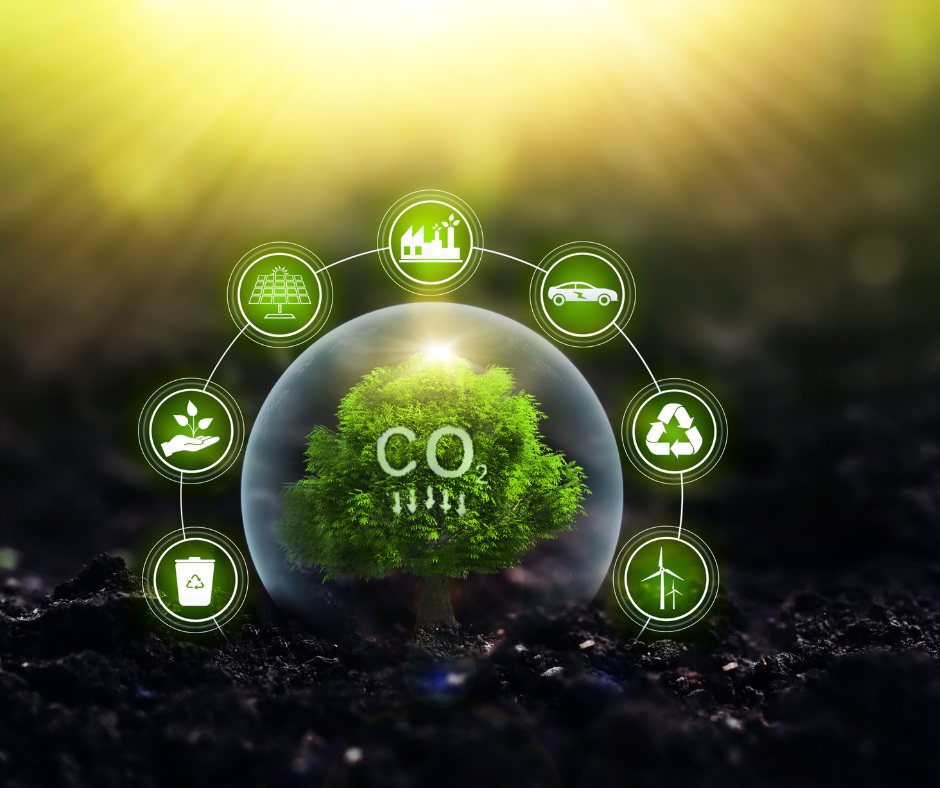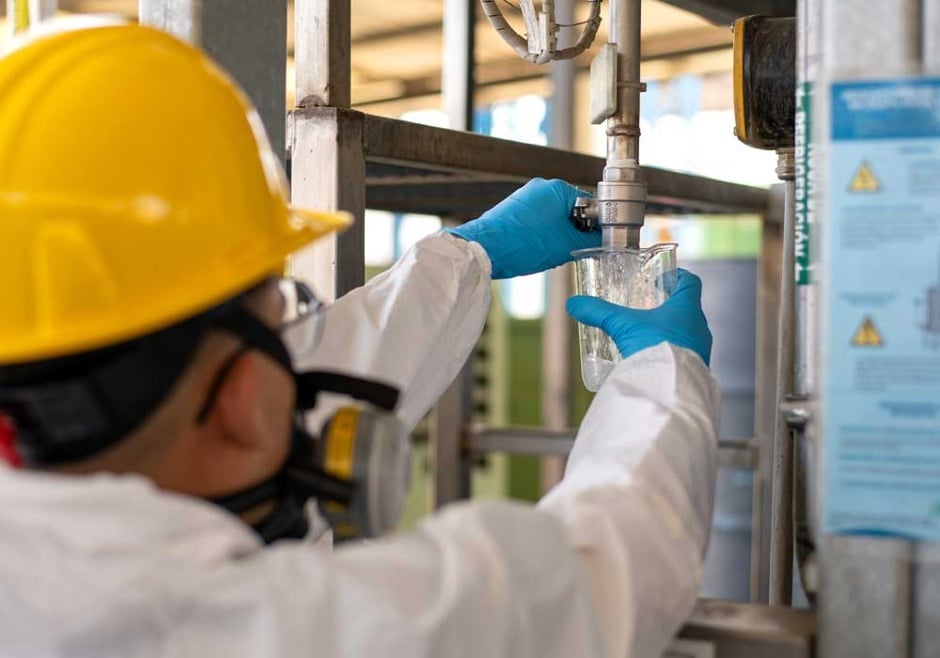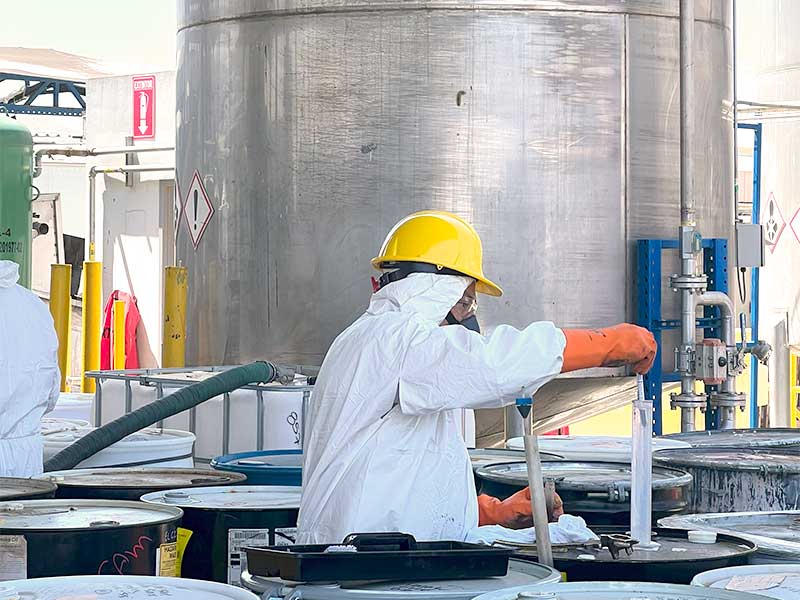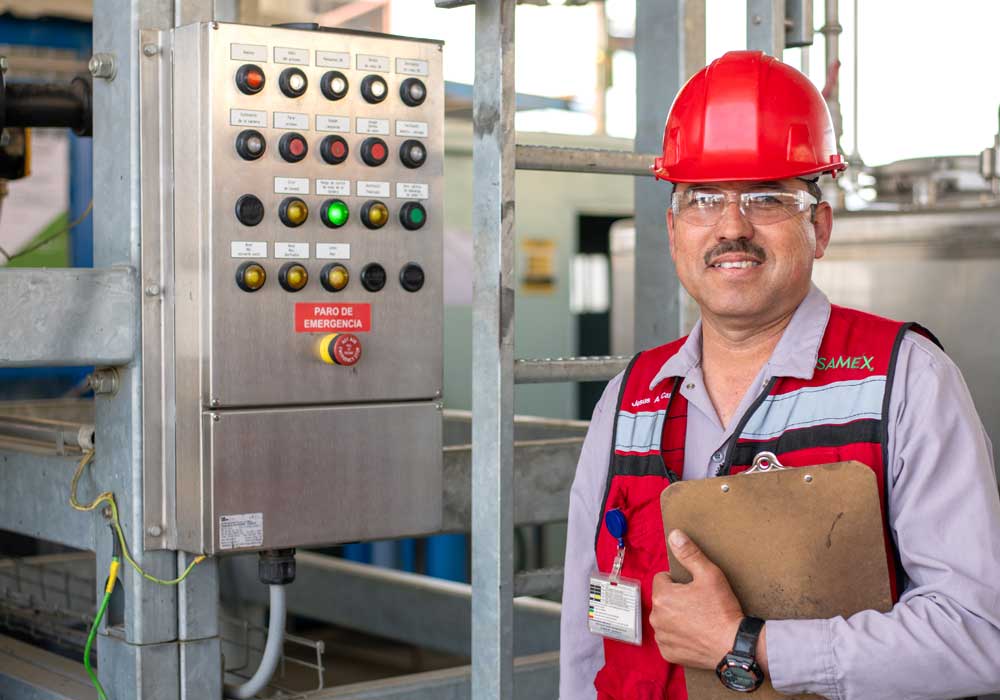Solvent Reclamation And The Charge Toward Zero Waste
Solvent distillation stands out as a key technique in reclaiming valuable solvents and minimizing environmental impact.
5 min read
 Larry Burton
:
Jul 25, 2024 10:15:00 AM
Larry Burton
:
Jul 25, 2024 10:15:00 AM

As businesses worldwide recognize the urgent need to minimize their environmental footprint, developing a sustainability plan has become essential for staying competitive and future-proofing operations.
As you develop and begin implementing a sustainability plan, here are five areas to take a closer look at:
By prioritizing energy efficiency, these facilities can significantly reduce their environmental footprint while concurrently bolstering their bottom line.
bolstering their bottom line.
Industrial operations are often energy-intensive, relying on machinery, heating, cooling and lighting systems that consume substantial amounts of energy. However, with strategic measures, facilities can mitigate this energy demand and drive toward a more sustainable future.
What are some of the ways you can accomplish this? By:
Investments in renewable energy sources, like solar panels or wind turbines, may also offer long-term sustainability benefits by reducing your facility’s reliance on fossil fuels and mitigating greenhouse gas emissions.
It’s also a good idea to routinely perform energy audits of your systems to identify energy inefficiencies and prioritize areas for improvement.
Another area you should consider is the energy efficiency of your business partners. For example, in waste management, you can indirectly reduce the amount of energy you are responsible for using by choosing a waste partner that uses efficient equipment (more on this later).
Resource conservation lies at the heart of sustainable industrial practices. Central to resource conservation is often the use of recycling and reuse programs for materials like metals, plastics and water.
By diverting these materials from landfills and reintegrating them into production processes, facilities can significantly reduce their reliance on virgin resources and minimize waste generation.
Through practices like product refurbishment, remanufacturing and material recovery, industrial facilities can transform waste into valuable resources … promoting sustainability and economic viability.
Here are a few other ways your facility can focus on conserving natural resources:
By adopting these strategies and integrating sustainability into their operations, you can contribute to the conservation of natural resources while promoting long-term economic viability and resilience.
Direct and indirect industrial greenhouse gas emissions account for about 30% of total U.S. emissions, according to the.png?width=300&height=251&name=Hazardous%20Waste%20Disposal-Lato%20(1).png) U.S. Environmental Protection Agency (EPA). This makes industrial emissions the second largest contributor to emissions of any sector.
U.S. Environmental Protection Agency (EPA). This makes industrial emissions the second largest contributor to emissions of any sector.
Direct emissions are those produced by burning fuel for power or heat. However, direct emissions can also be produced through chemical reactions and leaks from processes or equipment at industrial facilities. Indirect emissions refer to emissions produced by burning fossil fuels at a power plant to generate electricity that is later used by an industrial facility to power machinery.
One key strategy for emissions reduction is investing in cleaner technologies and processes that produce fewer emissions. This can include upgrading equipment to more energy-efficient models, implementing pollution control technologies such as scrubbers and catalytic converters, and optimizing combustion processes to minimize emissions of pollutants such as nitrogen oxides (NOx), sulfur dioxide (SO2), and particulate matter.
Industries can also reduce emissions by optimizing energy use and transitioning to renewable energy sources like solar, wind and biomass. By reducing reliance on fossil fuels, which are a major source of GHG emissions, industries can lower their carbon footprint and contribute to mitigating climate change.
Who you work with impacts your facility’s sustainability goals. Collaborating with suppliers that prioritize environmental responsibility and sustainable practices throughout the supply chain is important to consider when developing your sustainability objectives.
By partnering with like-minded organizations, industrial facilities can promote responsible sourcing, reduce environmental impact and enhance supply chain resilience. You can find partners with similar sustainability initiatives by looking for companies that have published sustainability reports or plans, as well as by conducting on-site assessments to evaluate their compliance with regulations and sustainability standards.
Industries can promote transparency and accountability in their supply chains by tracking and disclosing sustainability performance metrics, like greenhouse gas emissions, water usage and waste generation. This helps to build trust with stakeholders and demonstrates your commitment to sustainable business practices.
Yet, every facility’s supply chain will look different. When examining your network of interconnected entities, take a closer look at:
Particularly with waste providers, ensuring alignment with your sustainability objectives is crucial. Let’s explore why.
Effective waste management is a critical component of your facility’s sustainability strategy. It involves the responsible handling, treatment and disposal of waste generated throughout your operations, ensuring minimal environmental impact and compliance with regulations.
When selecting waste management partners, prioritize aligning your sustainability plan. Look for partners that offer environmentally responsible solutions, whether it’s recycling, composting or energy recovery. By diverting waste from landfills, you can minimize your facility’s carbon footprint and contribute to a more sustainable future.
Particularly with industries that generate solvent waste, there is an opportunity to incorporate a zero-waste solution into your sustainability plan.
Solvent recovery reduces the amount of waste generated by reclaiming and purifying solvents from waste streams. Whenever spent solvents are disposed of as waste, new raw materials must be extracted to replace them.
At Samex, our solvent distillation process focuses on zero waste. Here’s an overview of how solvent distillation works:
A top treatment, storage and disposal facility (TSDF) can even help you meet other areas of your sustainability plan like the ones we outlined above.
For example, when choosing a solvent distillation plant, look for one that embraces energy-efficient technology that results in high recovery volume and reduced volatile organic compound (VOC) emissions.
As we mentioned above, our water treatment plant repurposes water used during the recycling process. By ensuring nothing is wasted, and solvents are returned to industry, we are conserving resources and ensuring nothing goes to landfills.
By working together to identify opportunities for waste minimization and resource recovery, you can maximize the value of your waste streams while minimizing environmental harm.

Solvent distillation stands out as a key technique in reclaiming valuable solvents and minimizing environmental impact.

Though flammable liquids may not scream 'environmentally friendly,' they're often indispensable in industry. However, your business can still...

In today's eco-conscious world, businesses are increasingly seeking sustainable methods to manage waste, and the recycling of flammable fluids is no...